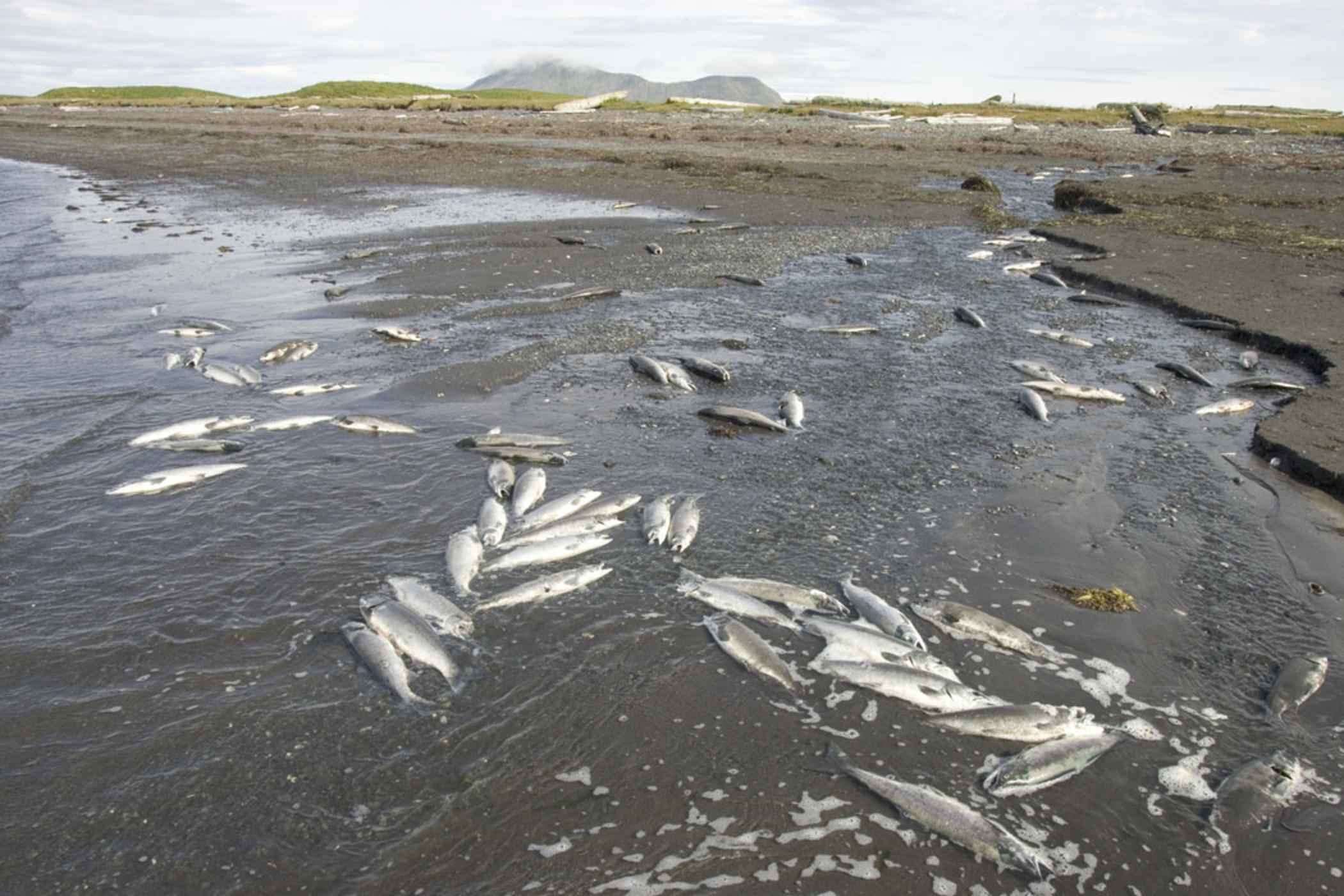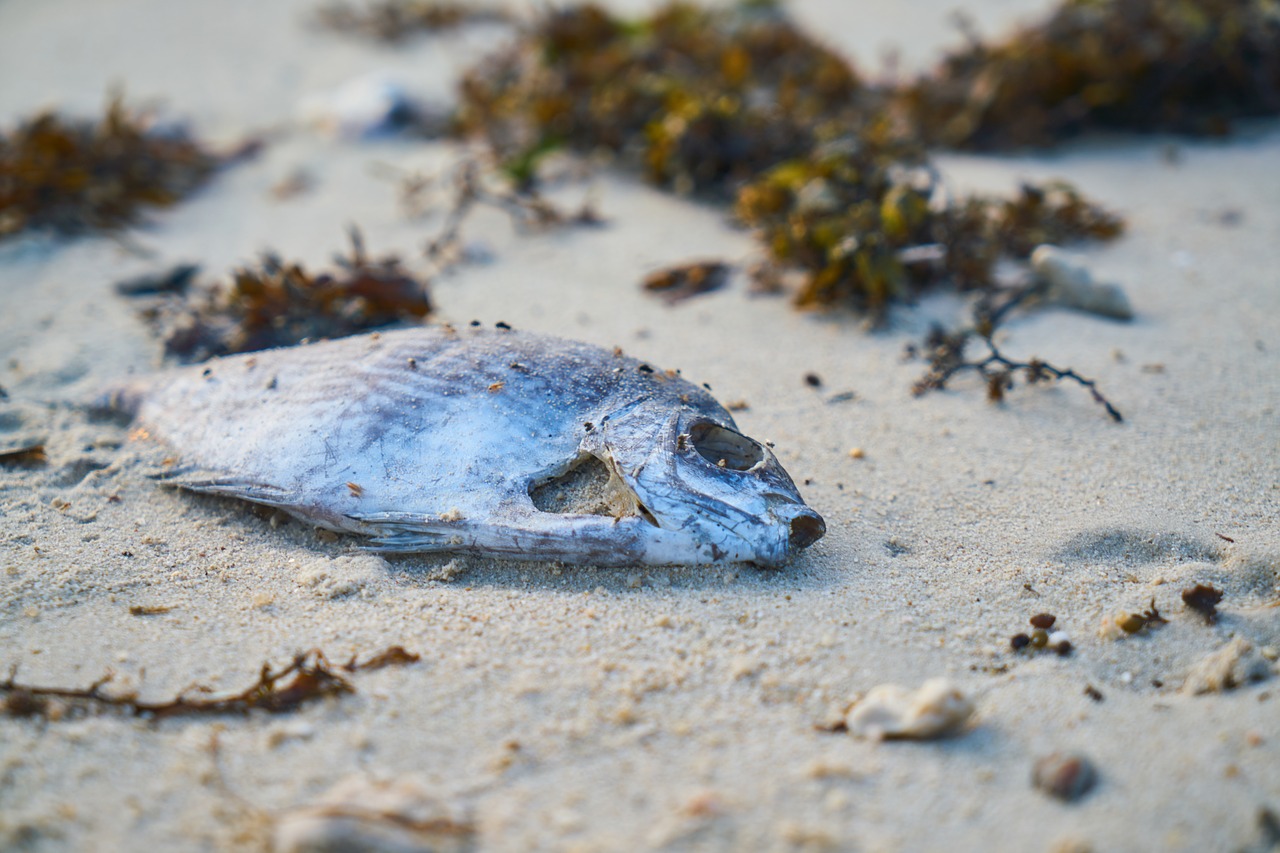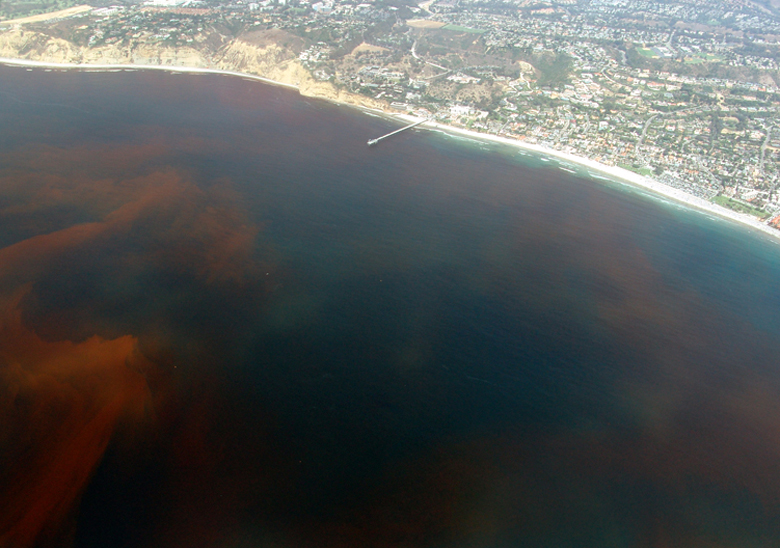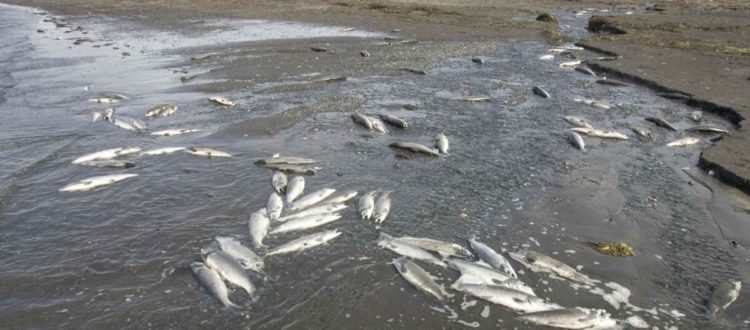Red tide : the aquatic fauna in danger
You certainly know the oil spills or the green tides whose proliferation of seaweed affects the Brittany coast every year. But, at the moment, another type of tide is worrying so much that Florida triggered a state of emergency on August 13, 2018. Red tide is not a new phenomenon and has been rife for a long time on the coasts of the whole world : in 2005, on the coasts of El Salvador and Guatemala, in 2006 in Australia or in 2016 in Chile. Already hit in 2013, Florida is currently facing one of the most important red tides in its history.

Red tide : why and how ?
Like the green tide, the red tide results in a very rapid proliferation of micro-organisms and micro-algae. It is this algal bloom that gives the water its characteristic “blood red” color. Red tide is considered a natural phenomenon occurring near the coast when nutrient, light and temperature conditions are present. Other external factors, such as marine currents, also favor the proliferation of micro-organisms. But how does this phenomenon pose a problem ?
During a red tide, there are more than 300 species of dinoflagellates, unicellular aquatic plant organisms, the best known are Karenia brevis, Noctiluca scintillans or Alexandrium excavatum. The latter are highly toxic because of the Brevetoxins they produce and release into the water. When the above conditions are favorable, the presence of Karenia brevis can extend over 1000 km² and persist for several months ! As was the case in 2013, the coast of Florida is currently affected by a proliferation of toxic micro-algae : the worst concentration of Karenia brevis for 10 years ! But how does this alga affect humans, fish, birds and marine mammals ?

The red tide impacts both animals and humans
In August alone, Florida authorities collected more than 100 tons of marine animals, found dead and stranded on beaches. Sea turtles, manatees and dolphins seem to be the species most affected by this new red tide. Neurotoxins released by Karenia brevis are dangerous when they are breathed or when they are consumed through infected fish or algae. With nearly 320 km of coastline affected, tons of fish found and the flight of tourists, authorities have declared a state of emergency in Florida, August 13, 2018. A situation that seems all the more critical as the red tide also affects humans. Dizziness, diarrhea, nausea, abdominal pain… are all symptoms caused by ingestion of Brevetoxin.
This new red tide is therefore more than worrying and augurs a multiplication of this kind of phenomenon in the years to come. According to biologist Larry Brand, seaweed is 10 times more abundant today than it was 50 years ago. At issue : the multiplication of agricultural production on the coastal strips, the development of industrial agriculture and the bad treatment of waste.




